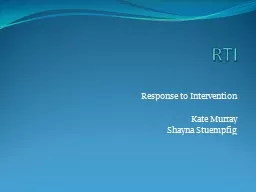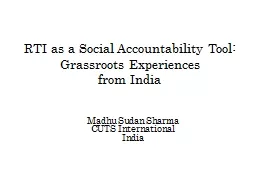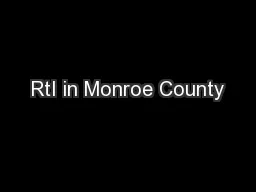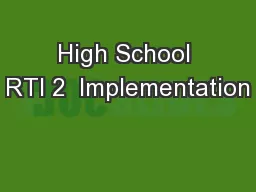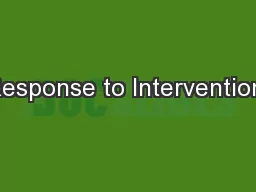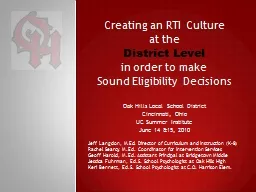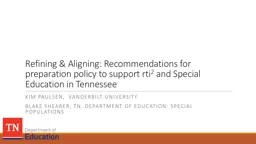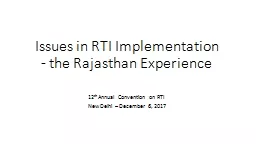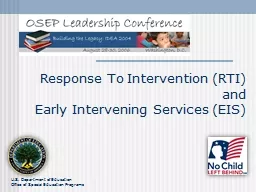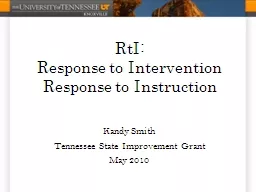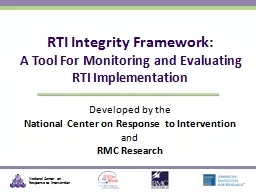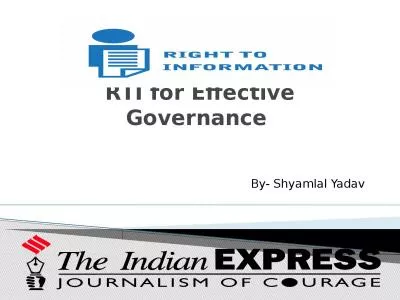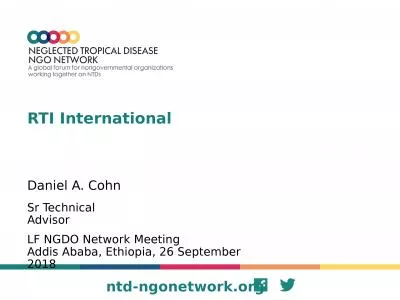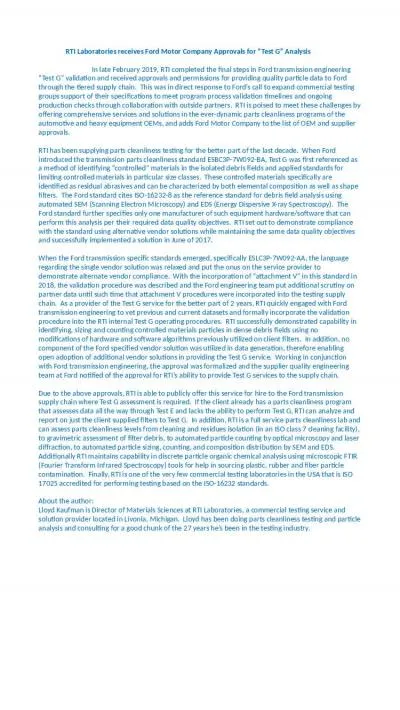PPT-RTI Response to Intervention
Author : pamella-moone | Published Date : 2016-07-05
Kate Murray Shayna Stuempfig What is it RTI is a datadriven multitiered approach to the early identification and support of students with learning and behavioral
Presentation Embed Code
Download Presentation
Download Presentation The PPT/PDF document "RTI Response to Intervention" is the property of its rightful owner. Permission is granted to download and print the materials on this website for personal, non-commercial use only, and to display it on your personal computer provided you do not modify the materials and that you retain all copyright notices contained in the materials. By downloading content from our website, you accept the terms of this agreement.
RTI Response to Intervention: Transcript
Download Rules Of Document
"RTI Response to Intervention"The content belongs to its owner. You may download and print it for personal use, without modification, and keep all copyright notices. By downloading, you agree to these terms.
Related Documents

